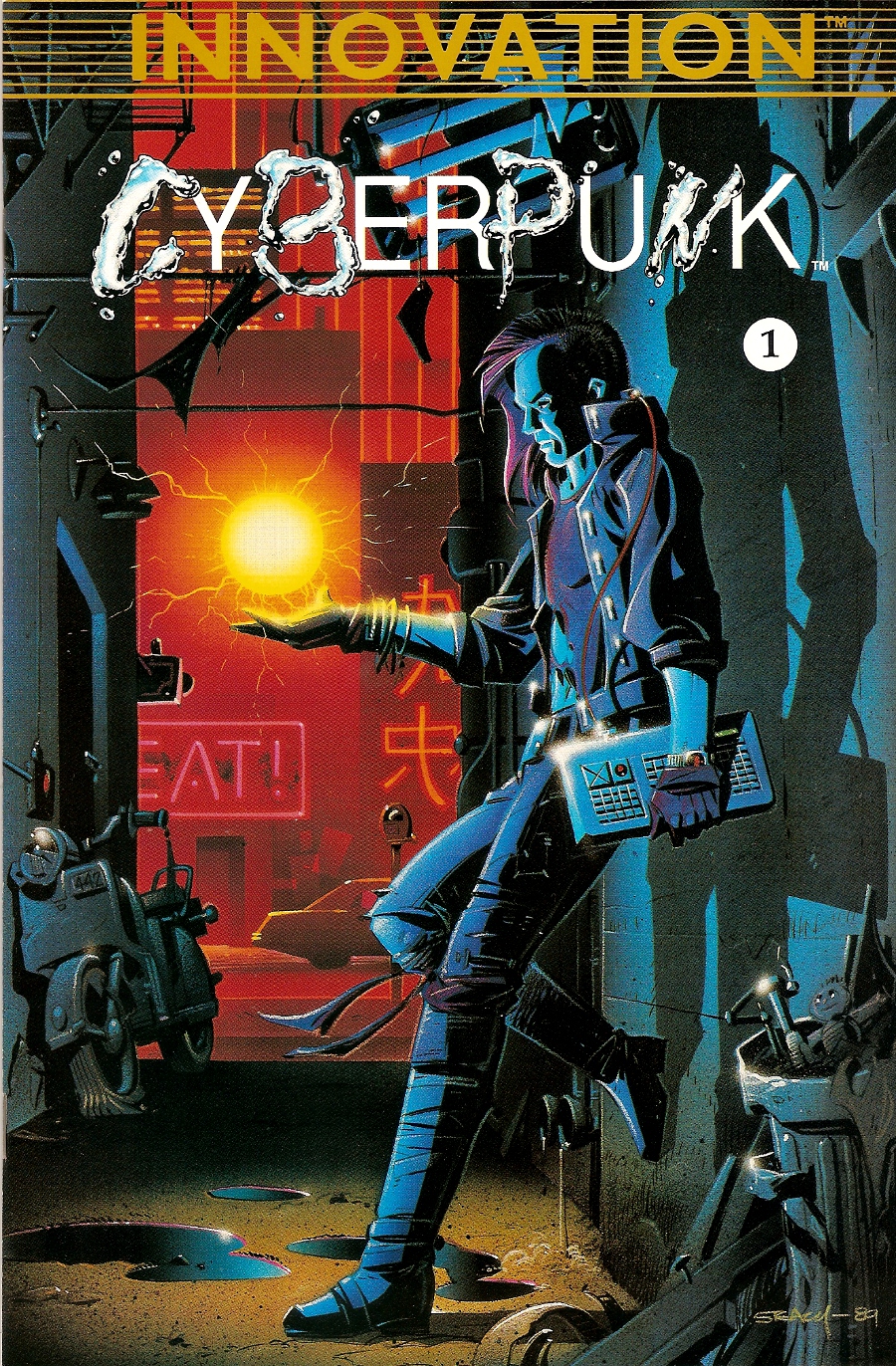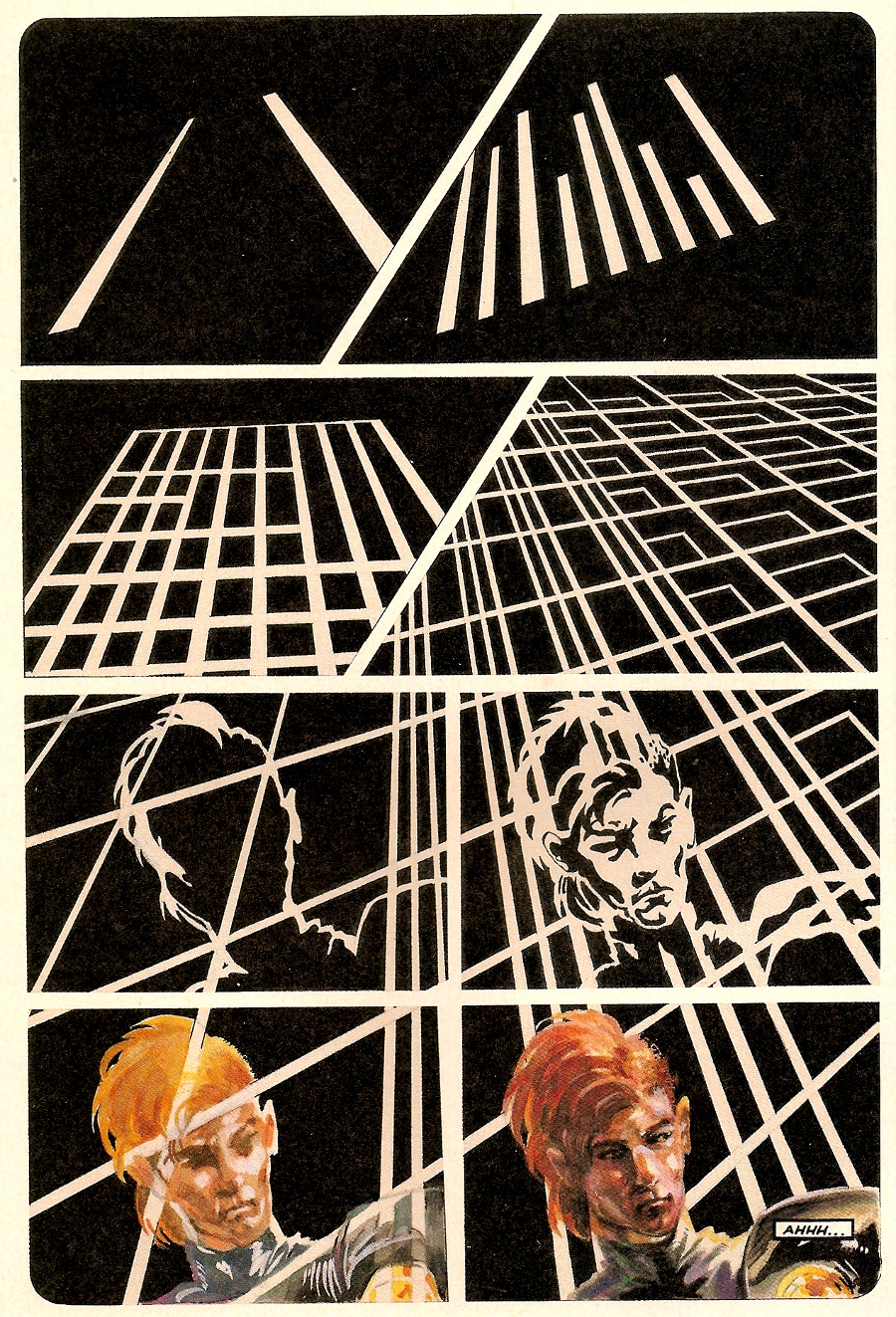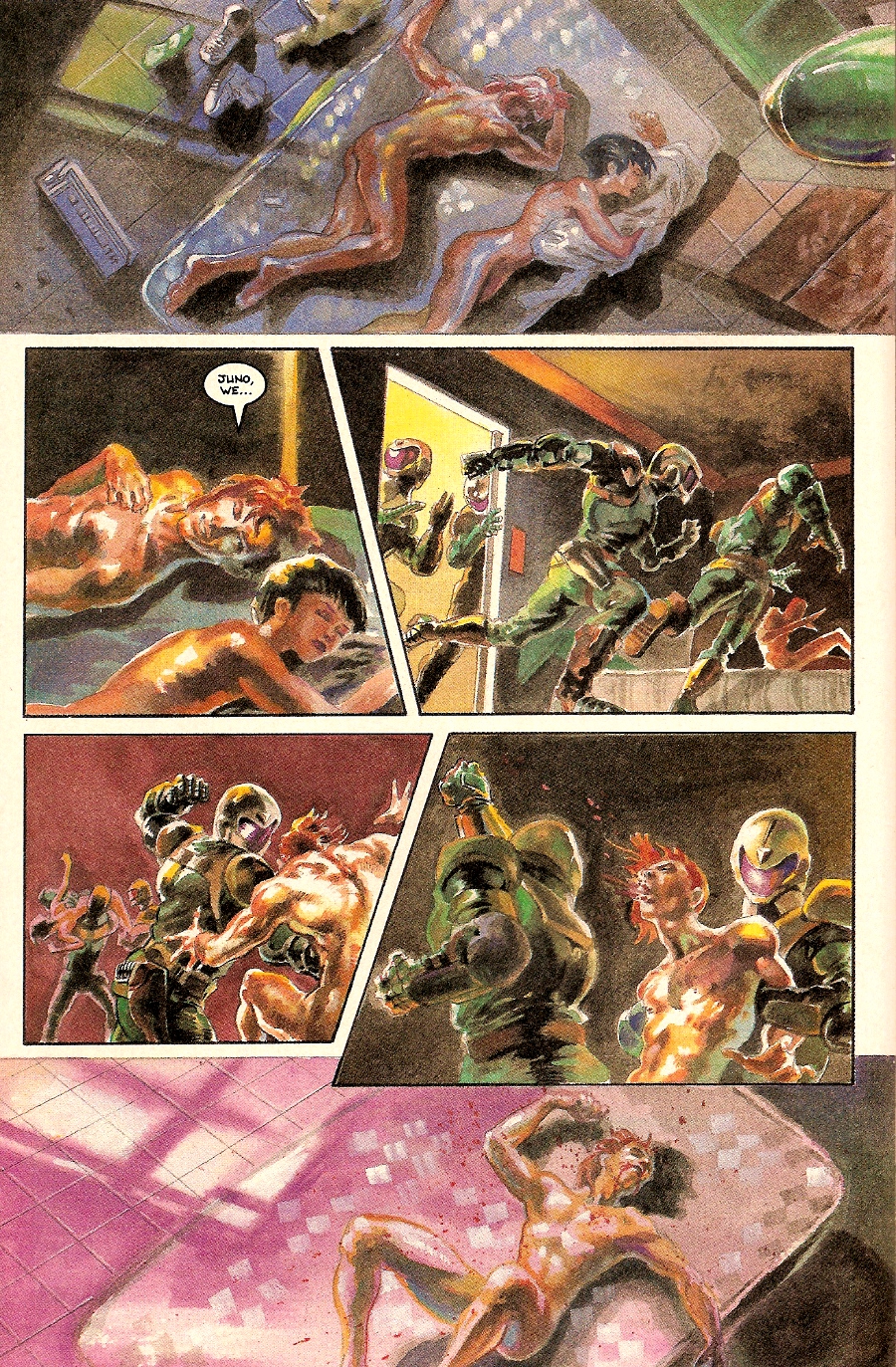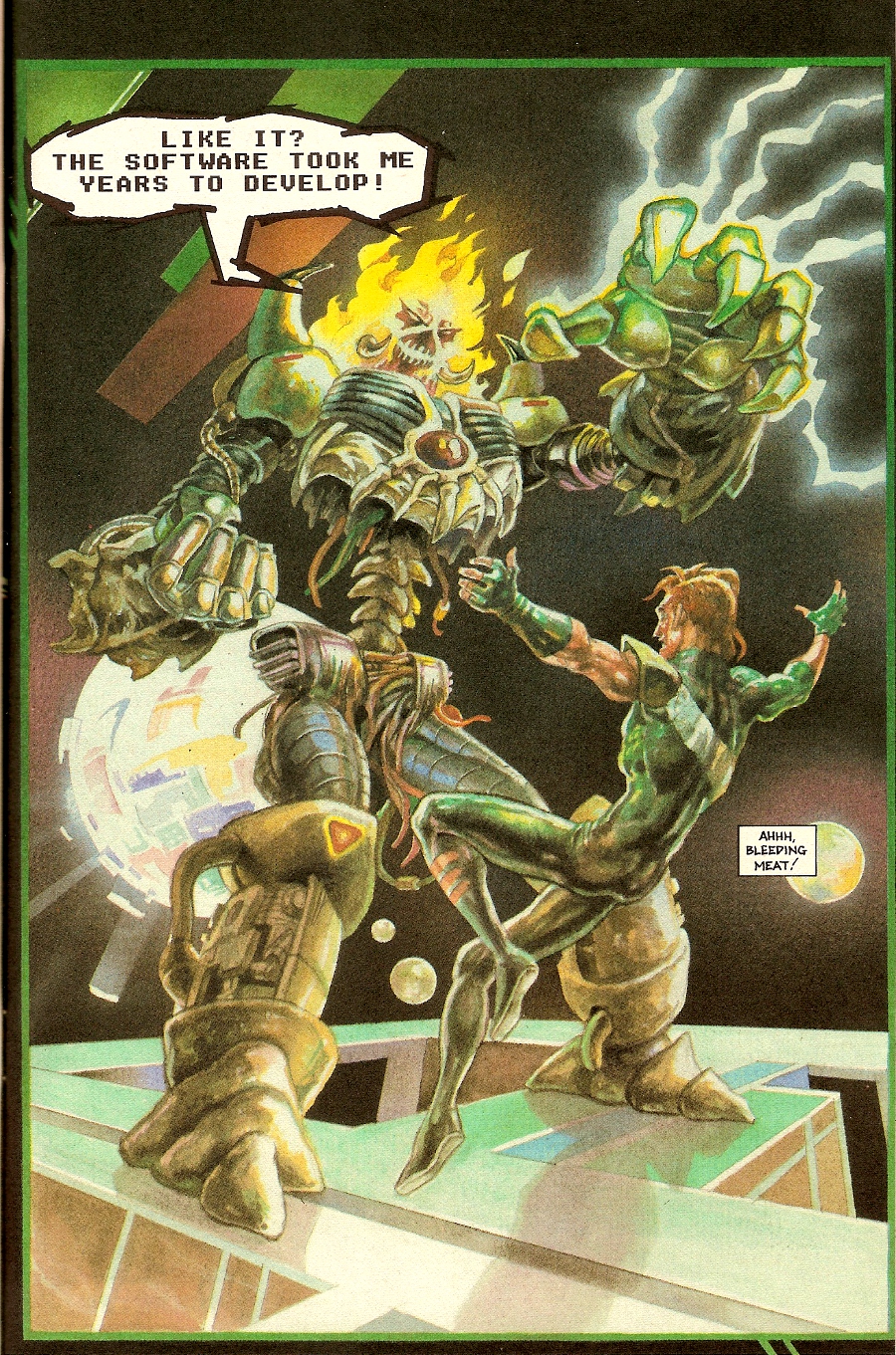 Although the Europeans had been doing fully-painted comics for years in the pages of magazines like Heavy Metal, they were almost unheard of in terms of the big two in America, Marvel and DC, until the mid-80’s when Marvel’s Epic Comics imprint published Moonshadow. Bill Sienkiewicz’s work on Daredevil: Love and War and Elektra: Assassin made a big splash, and suddenly it seemed as if painted comics were everywhere, like Dave McKean’s Black Orchid and Arkham Asylum or Duncan Fegredo’s Kid Eternity.
Although the Europeans had been doing fully-painted comics for years in the pages of magazines like Heavy Metal, they were almost unheard of in terms of the big two in America, Marvel and DC, until the mid-80’s when Marvel’s Epic Comics imprint published Moonshadow. Bill Sienkiewicz’s work on Daredevil: Love and War and Elektra: Assassin made a big splash, and suddenly it seemed as if painted comics were everywhere, like Dave McKean’s Black Orchid and Arkham Asylum or Duncan Fegredo’s Kid Eternity.
And even independent publishers started getting in on the act, like Innovation, which in 1990 released a fully-painted two issue miniseries titled Cyberpunk. The series was written by Innovation art director Scott Rockwell and painted by Darryl Banks.
Cyberpunk is the story of Topo, a hacker who spends most of his time in cyberspace. Actually, since this comic was written after the advent of cyberpunk, but before “hacker” and “cyberspace” had entered the common lexicon, Topo is called a “juggler” and “cyberspace” is “The Playing Field.”
And since the comic was created in 1990, before the revolution in computer graphics and virtual reality that allowed the development of modern MMORPG environments, the Playing Field looks a little low-res.
See, on the one hand, Topo is rendered in full detail (or as detailed as Banks’s painting ever gets) while the environment looks like a wireframe vector graphic, like pasting a person into a game of Tempest. In 1990, this said “computers.”
Anyway, after a brief duel to show how awesome Topo is in cyberspace, we run into the other great pillar (or cliche) of cyberpunk, namely corporate overreach. Topo’s ex-girlfriend Juno leaves her new squeeze, a super-rich corporate executive named Roi, who doesn’t feel like letting her go. Juno runs back to Topo, and they enjoy a sweaty, carnal reunion. But then…
When he comes to, Topo discovers that his deck has been smashed. So he goes to his friend and computer supplier Alma for new gear, which she provides because she has a crush on him. Topo enters the mainframe of Quondam Mechanics, Roi’s corporation, but is trapped and nearly killed by ICE (Intrusion Countermeasure Electronics, a term cribbed directly from William Gibson).
But Alma saves him, and instead of trying to talk him out of risking his life again, she just gives him a drink of water and a new piece of software and lets him try again. This time, he not only breaks through the ICE, but discovers that Juno’s mind has been uploaded to the mainframe in order to keep her body prisoner or something.
As Topo tries to liberate Juno’s mind, Roi enters cyberspace and attacks!
Topo wins, Roi loses and ends up a vegetable, Juno is saved. As a comic, Cyberpunk fell way short. The storyline hit the bare minumum of marks to even qualify as a story, the dialogue was wooden, and the painted art was too sloppy to be realistic while being too dull to qualify as impressionistic.
But someone must have bought it, because three months after issue 2 was published, Innovation published a follow-up miniseries, Cyberpunk: Book Two, written by Rockwell with art by Doug Talalla. And somehow both art and story managed to be even less interesting the second time around.
Also in May, 1990, Innovation published the first (and maybe only*) issue of another cyberpunk-genre book titled Seraphim, also with art by Doug Talalla and written by Chris Todd. And I only mention this because in November, Innovation published its last miniseries under the Cyberpunk title, Cyberpunk: The Seraphim Files, Â written by Chris Todd with art by Doug Talalla. So I’m wondering if Innovation tried putting Todd’s Seraphim storyline under the Cyberpunk umbrella to see if it would sell better, or if this was some kind of crossover.
But I don’t actually care enough to check further.
*This site lists Seraphim as having a three-issue run, but they only have a scan and publication date for the first issue, so I’m wondering if the latter two issues were ever actually published, or just solicited without ever being released. Likewise, it lists Cyberpunk: The Seraphim Files as having two issues, but only shows a cover and publication date for the first.








There were 2 Issues for Cyberpunk, then 2 issues for Cyberpunk Book 2. There were two issues for Cyberpunk: The Seraphim Files. I own all of those. I don’t know if there were three issues for Seraphim or not. I tend to think there was only 1 since I had a pull list at my local comic shop for it and only got 1 issue. I had a pull list for anything cyberpunk back then so I have a lot of off beat comics from back then.